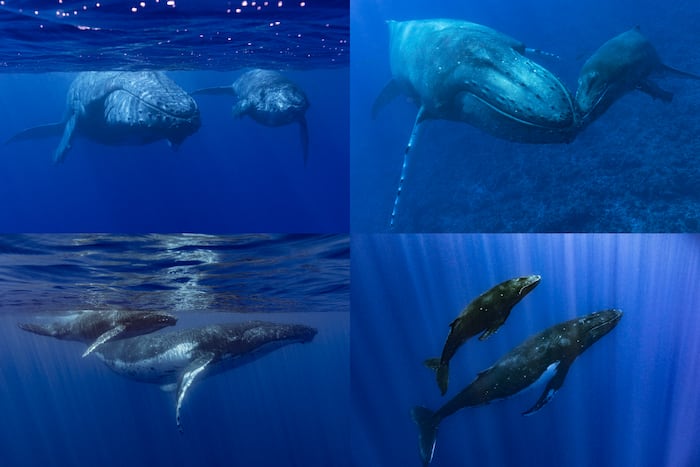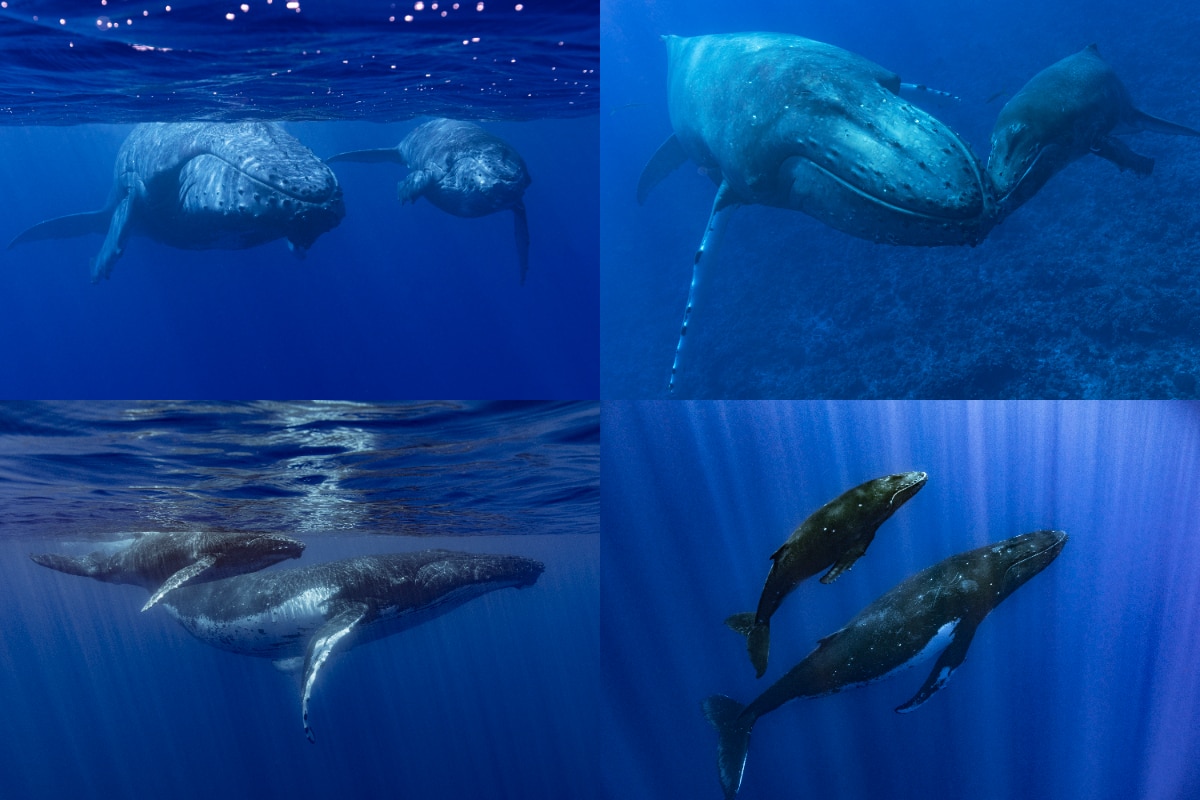In the laboratory, the scientists blew air through the voice boxes under controlled conditions to see what tissues might vibrate.

(2) This photo provided by Samuel Lam shows a humpback whale and her calf in Rurutu, French Polynesia in September 2022. Humpbacks are known to compose elaborate songs that travel across oceans and whale pods. (Samuel Lam via AP)
(3) This photo provided by Samuel Lam shows a humpback whale and her calf in Papeete, French Polynesia in September 2022. Humpbacks are known to compose elaborate songs that travel across oceans and whale pods. (Samuel Lam via AP)
(4) This photo provided by Samuel Lam shows a humpback whale and her calf in Papeete, French Polynesia in September 2022. Humpbacks are known to compose elaborate songs that travel across oceans and whale pods. (Samuel Lam via AP)
London: Whales sing loud enough that their songs travel through the ocean, but knowing the mechanics behind that has been a mystery. Scientists now think they have an idea, and it’s something not seen in other animals: a specialized voice box.
Experts say the discovery, while based on a study that is too tiny to be definitive, will direct future research into how whales communicate.
In a paper published Wednesday in the journal Nature, Coen Elemans of the University of Southern Denmark and colleagues studied the voice boxes, or larynxes, from three dead, stranded whales — a humpback, minke and sei, which are all types of baleen whales.
In the laboratory, the scientists blew air through the voice boxes under controlled conditions to see what tissues might vibrate. Researchers also created computer models of the sei whale’s vocalizations and matched them to recordings of similar whales taken in the wild.
Whales’ ancestors were land-dwellers about 50 million years ago before moving into water. Elemans said the animals adapted their voice boxes over tens of millions of years to make sounds underwater.
Unlike humans and other mammals, baleen whales don’t have teeth or vocal chords. Instead, in their voice boxes, they have a U-shaped tissue that allows them to breathe in massive amounts of air and a large “cushion” of fat and muscle not seen in other animal species. Whales sing by pushing the tissue against the fat and muscle cushion, Elemans said.
“This is the most comprehensive and significant study to date on how baleen whales vocalize, a long-standing mystery in the field,” said Jeremy Goldbogen, an associate professor of oceans at Stanford University, who was not involved in the new research.
He noted there is more to be studied “given the extraordinarily diverse acoustic repertoires” of whales. Humpbacks, for example, are known to compose elaborate songs that travel across oceans and whale pods.
As loud as whales’ songs are, modelling suggests that humpbacks and related species can’t produce sounds louder than the shipping industry, Elemans said.
“They’re really affected by (shipping noise) and it significantly reduces their ability to communicate,” he said. “There’s just no way for them to get louder.”
Because some whales sing as a mating call, the shipping industry’s interruption of those songs is potentially worrying, said Michael Noad, director of the Centre for Marine Science at the University of Queensland in Australia. He was not part of the Nature study.
“For whale populations that are really dispersed, like the Antarctic blue whales, they might not be able to find mates in a noisy ocean environment,” he said, noting that whale species like humpbacks that gather in big numbers are more likely to shrug off such noise pollution.
The whale voice boxes tested were from juveniles, not adult males, who do the singing. Because of that, whale expert Joy Reidenberg said, further experiments on adult males are needed to confirm the study’s findings.
But Reidenberg, who works for the Center for Anatomy and Functional Morphology at the Icahn School of Medicine at Mount Sinai in New York, noted that lab research is probably as close as we can get to replicating how whales sing.
“Right now, our technology involves sticking a scope into a whale to see what exactly is vibrating,” she said. “Since you’re never going to be able to do that in a wild animal, these experiments are the next best thing.”

